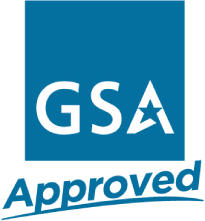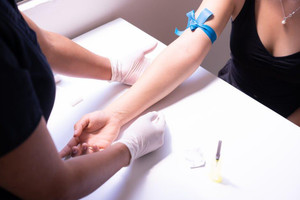Blood Drawing Kit With Tourniquet Guide
Posted by Live Action Safety on 9th Jul 2024
When treating medical injuries, it only takes seconds for disaster to arise. It's not uncommon for profuse bleeding to cause health complications or even death. Having the right blood drawing kit and tourniquet at your disposal can make all the difference.
However, it's also crucial to understand how to use them. This guide by Live Action Safety will help ensure you get started on the right track. Let's explore the key information you need to consider.
Understanding Blood Drawing Kits
A blood drawing kit is essential for any medical professional. These kits contain all the necessary tools to perform a blood draw safely and effectively. Choosing the right kit ensures the process is smooth and minimizes patient discomfort.
A typical blood drawing kit includes needles, tubes, alcohol swabs, and a tourniquet. Each component plays a crucial role in the procedure. Ensuring all parts are available and in good condition is vital for safe blood drawing.
Safe Blood Drawing Procedures
Following established blood collection procedures ensures safety for both the patient and the healthcare provider. It reduces the risk of infection and other complications. Always adhere to hygiene protocols and use sterile equipment.
Proper identification of the patient and correct labeling of samples is also crucial. Mislabeling or mishandling can lead to serious medical errors. Ensure you avoid cross-contamination of additives between tubes.
Always adhere to your training and safety protocols under all circumstances. A single mistake can have major consequences.
For instance, human error could lead to a major lawsuit. It can also impact the patient's health and recovery.
Tourniquet Application Tips
Applying a tourniquet correctly can make a significant difference in the ease of blood collection. It should be tight enough to slow blood flow but not so tight that it causes pain or injury. Practice and precision are key.
Ensure the tourniquet is placed about three to four inches above the puncture site. Avoid leaving it on for more than one minute to prevent tissue damage. Proper application not only aids in efficient blood collection but also enhances patient comfort and safety during the procedure.
Sourcing Your Materials
Not all providers are created equal, and it's crucial to find a reputable supplier. This will help ensure you get the best results for your situation. Here are key criteria to keep an eye out for.
Supplier Reputation
Evaluate the supplier's reputation by checking reviews, ratings, and testimonials. A well-regarded supplier often reflects consistent quality and reliable service. Industry certifications and professional affiliations also indicate a trustworthy provider.
Look for fake reviews during your search, as well. These tend to be posted in large groups and contain many of the same keywords.
Ignore them so you can maintain an accurate perspective of the company. The last thing you want is to choose a supplier based on false assumptions.
If they don't have feedback to look through, consider other options. This is a red flag you can't overlook.
Quality of Products
Ensure the medical equipment meets industry standards and regulations. High-quality products are essential for patient safety and effective medical care. Look for suppliers that provide detailed product specifications and certifications.
Never sacrifice quality when making your decision. Low-quality products could make dire situations far worse. For instance, imagine what would occur if your equipment made it impossible to stop bleeding.
Range of Equipment
A good supplier should offer a wide range of medical equipment to meet diverse needs. This includes everything from basic supplies to specialized devices. A diverse inventory ensures you can source all necessary materials from a single provider.
Ideally, you'll find a single supplier for all the products you need. This prevents you from having to research multiple businesses for different equipment. Doing so will cost a substantial amount of time.
Placing large orders from a single supplier can also strengthen your rapport with them. They'll be more likely to offer you deals on your equipment.
Pricing and Value
Compare prices among different suppliers to find competitive rates. Consider the overall value, including product quality, customer service, and any additional benefits like warranties or maintenance services.
Cost-effective solutions should not compromise on quality. If a price seems too good to be true, it likely is. Keep this in mind when moving forward.
Customer Support
Reliable customer support is crucial for addressing inquiries, handling returns, and providing technical assistance. Choose suppliers known for their responsive and helpful customer service. Good support can make a significant difference in overall satisfaction.
Ask about how they offer support before moving forward. Some providers use chatbots, while others allow you to contact a human employee. Understanding this info will prevent conflicts from arising.
Delivery and Logistics
Timely delivery and efficient logistics are essential for maintaining medical operations. Evaluate the supplier's delivery options, shipping times, and reliability.
A dependable supplier ensures you receive your equipment promptly and in good condition. No matter how good the product is, it won't mean much if you don't have it when required.
After-Sales Services
After-sales services like maintenance, training, and support are valuable for long-term satisfaction. Ensure the supplier offers comprehensive after-sales care to help you get the most out of your equipment. These services contribute to the longevity and effectiveness of your medical devices.
They can also help you resolve issues that arise after purchase. Getting left in the dark can be frustrating and time-consuming.
Leverage This Guide From Live Action Safety
Having the right emergency medical supplies on hand can make a critical difference in life-threatening situations. Blood drawing kits and tourniquets are essential Live Action Safety gear you should always maintain access to. Just be sure you and your team know how to use them.
Live Action Safety offers a comprehensive range of emergency medical supplies, including first aid kits, active shooter kits, and defibrillators. Our products are designed for various professions, ensuring top-notch safety and preparedness.
We also offer robust customer support to help you overcome the obstacles you face. You'll learn more about how we can help when you get in touch with us today.


